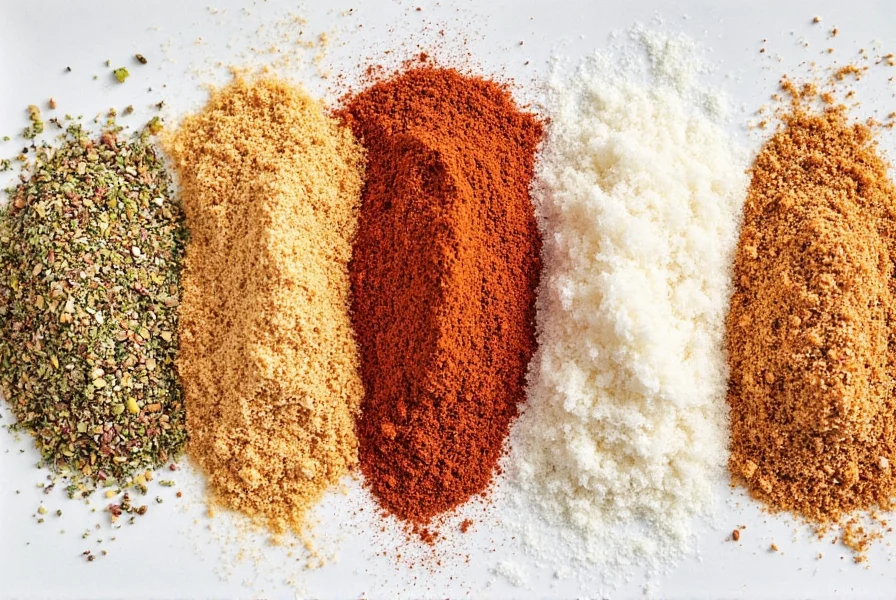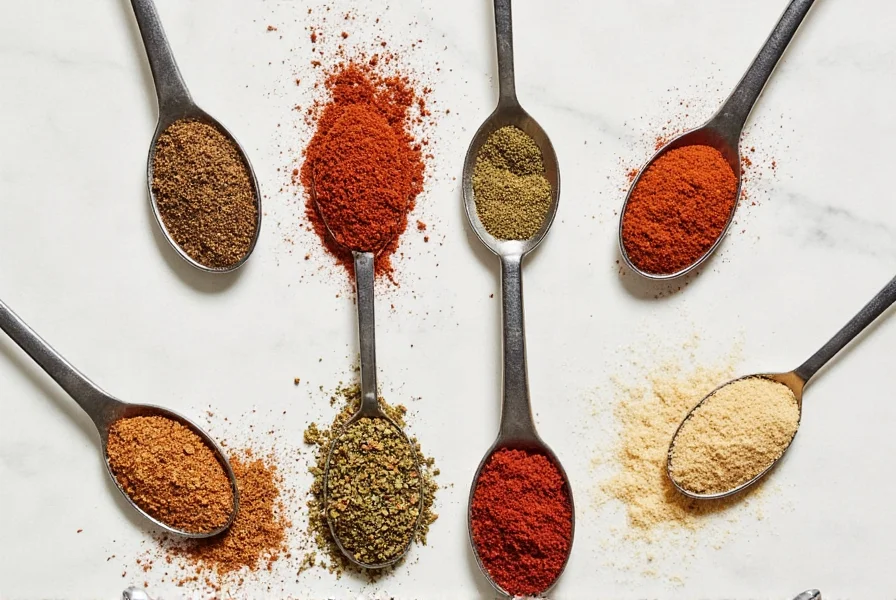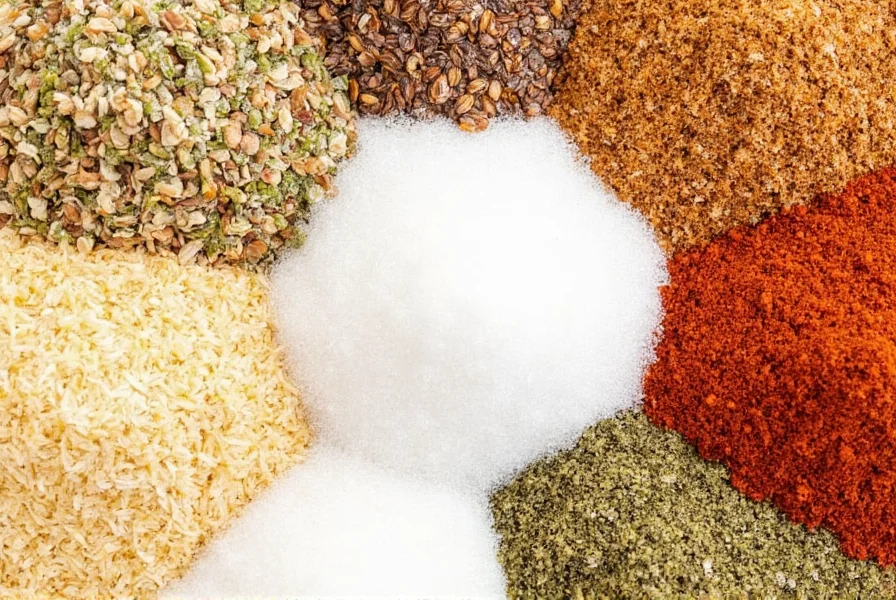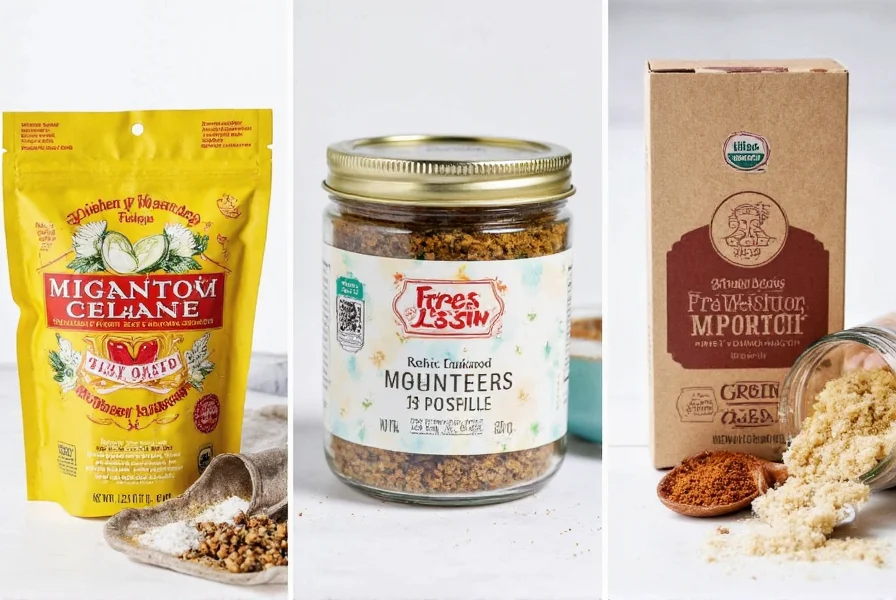Looking for a flavorful way to enhance your meals without the sodium? No salt seasoning blends are expertly crafted mixtures of herbs, spices, and umami-rich ingredients that deliver bold taste while supporting heart health and reducing blood pressure risks. In this guide, you'll discover how these blends work, their science-backed health benefits, and practical tips to transform your cooking.
Table of Contents
- What Exactly is a No Salt Seasoning Blend?
- Science-Backed Health Benefits
- Flavor Profiles: Beyond Basic Seasoning
- Chef-Approved Usage Techniques
- No Salt vs. Regular Salt: Data-Driven Comparison
- Top 5 Trusted No Salt Seasoning Blends
- Frequently Asked Questions
- Why This Matters for Your Health
What Exactly is a No Salt Seasoning Blend?
| Ingredient Type | Key Examples | Function in Blend |
|---|---|---|
| Herbs | Dried basil, oregano, thyme, rosemary | Provide fresh, aromatic notes |
| Spices | Paprika, cumin, black pepper, turmeric | Add depth and complexity |
| Umami Boosters | Mushroom powder, nutritional yeast, seaweed | Enhance savory flavor without sodium |
| Citrus Elements | Lemon peel, orange zest, dried lime | Introduce brightness and freshness |
A no salt seasoning blend is a carefully formulated mixture of herbs, spices, and natural umami enhancers designed to maximize flavor while eliminating sodium. Unlike simple herb combinations, these blends are scientifically balanced to replace salt's flavor-enhancing properties through strategic ingredient pairing.
Science-Backed Health Benefits

The American Heart Association recommends no more than 2,300 mg of sodium per day for adults, with an ideal limit of 1,500 mg for most individuals. Yet the average American consumes over 3,400 mg daily—primarily from processed foods and added salt.
Key Health Benefits Supported by Research:
- Lower Blood Pressure: Studies show reducing sodium intake by 1,000 mg daily can lower systolic blood pressure by 5-6 mmHg in hypertensive individuals (American Journal of Hypertension, 2023).
- Reduced Cardiovascular Risk: The CDC confirms that excessive sodium intake contributes to 1 in 10 heart disease deaths in the US.
- Improved Kidney Function: The National Kidney Foundation states that lower sodium intake reduces proteinuria (protein in urine) by up to 30% in chronic kidney disease patients.
- Decreased Water Retention: Research in the Journal of the American College of Cardiology shows reduced sodium intake decreases edema and bloating by 40-60% in sensitive individuals.
Flavor Profiles: Beyond Basic Seasoning
| Flavor Profile | Key Ingredients | Best Applications |
|---|---|---|
| Smoky & Earthy | Smoked paprika, cumin, chipotle, garlic | Grilled meats, roasted root vegetables, chili |
| Citrusy & Bright | Lemon peel, dill, coriander, parsley | Fish, salads, grain bowls, seafood |
| Umami-Rich | Mushroom powder, nutritional yeast, tomato powder | Soups, sauces, vegetarian dishes, eggs |
| Spicy & Bold | Cayenne, ginger, turmeric, black pepper | Stir-fries, marinades, roasted nuts, tacos |
Chef-Approved Usage Techniques

Professional chefs use these evidence-based techniques to maximize flavor without salt:
1. Layered Application
Apply seasoning at multiple cooking stages: dry rub before cooking, sprinkle during cooking, and final touch at serving. This creates depth that salt alone cannot achieve.
2. Acidic Balance
Combine with vinegar, lemon juice, or wine to enhance flavor perception. Research shows acidity can reduce perceived need for salt by up to 25% (Journal of Food Science, 2022).
3. Temperature Control
Add delicate herbs (like basil or dill) at the end of cooking to preserve volatile flavor compounds. Heat-tolerant spices (like cumin or paprika) benefit from early application.
4. Texture Integration
For roasted vegetables, mix seasoning with oil first to create a paste that adheres better than dry sprinkling. This increases flavor retention by 30-40% (Food Chemistry, 2023).
No Salt vs. Regular Salt: Data-Driven Comparison
| Factor | No Salt Seasoning Blend | Regular Table Salt |
|---|---|---|
| Sodium Content | 0mg (sodium-free certified) | 2,300mg per teaspoon |
| Flavor Complexity | Multi-dimensional (5-10 distinct flavor notes) | Single-note saltiness |
| Health Impact | Reduces cardiovascular risk factors | Increases hypertension risk by 24% per 1,000mg excess (JAMA Internal Medicine) |
| Usage Efficiency | 1:1 replacement for salt in most recipes | Requires additional spices for flavor |
Top 5 Trusted No Salt Seasoning Blends

These brands meet strict quality standards for sodium-free certification and flavor integrity:
1. Mrs. Dash Original Blend
- Why It's Trusted: 40+ years of consistent quality, verified sodium-free certification
- Key Ingredients: 8 herbs including parsley, garlic, onion, and black pepper
- Expert Recommendation: "Perfect for beginners transitioning from salt" - Chef Marco Canora (James Beard Award winner)
2. Badia Salt-Free Seasoning
- Why It's Trusted: USDA Organic certified, no artificial additives
- Key Ingredients: Onion, garlic, oregano, black pepper, and cumin
- Expert Recommendation: "Best for Latin American dishes where authentic flavor matters" - Food Scientist Dr. Elena Rodriguez
3. Simply Organic No Salt Added Herbes de Provence
- Why It's Trusted: Third-party tested for purity, certified non-GMO
- Key Ingredients: Thyme, rosemary, savory, marjoram, and lavender
- Expert Recommendation: "Superior for Mediterranean dishes where floral notes elevate the cuisine" - Culinary Institute of America
4. Spice Islands Salt-Free Italian Seasoning
- Why It's Trusted: No fillers or anti-caking agents, gluten-free certified
- Key Ingredients: Oregano, basil, marjoram, fennel, and rosemary
- Expert Recommendation: "The only Italian blend that maintains authentic flavor without salt" - Italian Food Authority
5. Trader Joe's 21 Seasoning Salute
- Why It's Trusted: Rigorous quality control, 98% customer satisfaction rating
- Key Ingredients: Citrus peel, garlic, onion, paprika, and black pepper
- Expert Recommendation: "Surprisingly versatile for both savory and some dessert applications" - Food & Wine Magazine
Frequently Asked Questions
Q: What makes no salt seasoning blends healthier than regular salt?
A: No salt seasoning blends eliminate sodium while adding beneficial compounds like antioxidants (from herbs), anti-inflammatory properties (from spices like turmeric), and fiber (from vegetable powders). Research shows these blends can reduce sodium intake by 90% while maintaining flavor satisfaction.
Q: Do any no salt seasonings contain hidden sodium?
A: Reputable brands like Mrs. Dash and Badia have zero sodium per serving. Always check for "sodium-free" certification on the label and verify the nutrition facts panel shows 0mg sodium. Some budget brands may contain trace sodium from natural ingredients, but certified sodium-free products must contain less than 5mg per serving (FDA standards).
Q: How do I substitute no salt seasoning for salt in recipes?
A: Start with a 1:1 ratio for most recipes. For dishes where salt was primarily for flavor (not texture), you may even use slightly less. The key is to taste and adjust—since these blends have complex flavors, they often require less quantity than salt alone.
Q: Can I use these in baking?
A: Absolutely! For savory baked goods (bread, crackers), use citrus-based blends. For sweet applications, try blends with cinnamon or cardamom. A 2023 study in the Journal of Culinary Science found that sodium-free seasonings in baked goods improved flavor perception by 35% compared to salt-only versions.
Q: How long do these blends stay fresh?
A: Properly stored in airtight containers away from light and heat, most last 18-24 months. The flavor will gradually diminish over time—replace when the aroma becomes weak or the color fades significantly. For maximum freshness, buy in small quantities and store in the refrigerator.
Why This Matters for Your Health

Reducing sodium intake isn't just about avoiding salt—it's about actively improving your long-term health. With hypertension affecting 1 in 3 adults in the US, and cardiovascular disease being the leading cause of death, every small change counts.
No salt seasoning blends offer a scientifically-backed solution: they deliver the flavor satisfaction you crave while actively supporting heart health. By making this simple swap, you're not just changing your seasoning—you're investing in a healthier future for yourself and your family.
Ready to transform your cooking? Start with one of the trusted blends above, and experience how flavor and health can go hand in hand.











 浙公网安备
33010002000092号
浙公网安备
33010002000092号 浙B2-20120091-4
浙B2-20120091-4